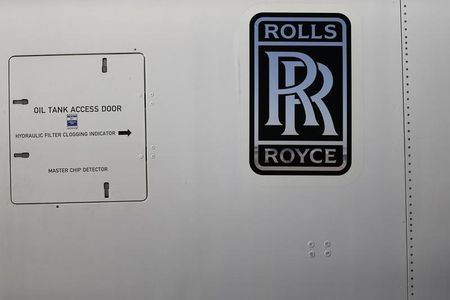Proactive Investors - The stars seem to have aligned for Rolls-Royce Holdings PLC (LON:RR), with the gloomy days of the pandemic now becoming an ever-distant memory as new chief executive Tufan Erginbilgic leads the company onwards and upwards.
According to UBS, the FTSE 100-listed manufacturer’s recently hiked guidance on the back of a strong first half of the year may still be too low as a result.
Rolls-Royce could score pre-tax earnings as high as £1.5 billion this year, above the company’s anticipated £1.2 to £1.4 billion, analysts said, with free cash flow likely to be toward the top end of the guided £0.9 to £1 billion range.
Not only this, UBS sees Rolls-Royce shares quadrupling to 600p in its upside scenario, as a return to profit at the half-year stage looks to be only the beginning.
Better contracts
One key improvement UBS noted at Rolls-Royce is the new management team’s more positive attitude to contracts with civil aerospace customers.
Erginbilgic, who joined the company in January, has already had a major impact in securing better terms, according to the bank, including by enforcing inflation-linked clauses.
Within Rolls’ own guidance, the company expects as much as a £250 million improvement to profit from better contract terms this year.
Rolls-Royce is paid based on the flying times of its engines, given the power units are sold with long-term service agreements.
Though this is great when planes are flying and engines, therefore, need servicing, this hefty exposure - which for Rolls is also limited to the larger, wide-body plane market - came back to bite during the pandemic.
Given higher costs since and a still-recovering aviation sector, UBS suggested improving clauses within Rolls’ contracts were a key part of Erginbilgic’s transformation plan, aimed at turning the company around from - in his own words - a “burning platform”.
“The new management team has had important successes” so far, UBS commented, pointing to “improving contract terms with key customers” and “an attitude shift on pricing”.
Engine flying times
In light of existing contracts with airlines, their post-pandemic recovery is also vital for Rolls-Royce’s success.
Now, as mentioned, Rolls is particularly exposed to the wide-body market, which focuses largely on long-haul routes, and is yet to develop a smaller-jet engine.
This is in spite of hints that it was eyeing a way into the market at this year’s Paris Air Show.
Since short-haul has bounced back much more aggressively than longer-distance aviation, impacted by China’s sluggish recovery after Covid-19-induced lockdowns, this has marked a blow for Rolls-Royce.
However, UBS highlighted that the company’s strong start to the year was regardless of a drag on the recovery of global flying times and therefore the use of, and payment for, Rolls-Royce’s engines.
The fact that Asia accounts for a majority of the wide-body aviation market, with some 51% of long-haul flights starting or ending in the continent in 2019, further scope for recovery presents an opportunity for Rolls-Royce, UBS said.
“A new chief executive officer, combined with a strong and underappreciated market tailwind coming from China, is likely to drive continued upside throughout 2023,” the bank noted.
“The wide body market is heavily skewed to Asia and especially China,” it explained, meaning Chinese weakness accounts for around 40% of the traffic reduction on 2019.
Though engine flight times still lag behind pre-pandemic trends, the bank predicted 2024 would see the aviation sector finally recover, anticipating traffic would sit 8% ahead of the 2019 benchmark.
“Now that quarantine restrictions have been lifted [in China] this headwind is abating,” UBS reassured, ultimately translating to more airtime for Rolls-Royce’s engines.
Previous issues already priced in
Although highlighting optimism around Rolls-Royce’s future, UBS suggested a look back at its recent history only hinted to further upside potential in the company’s share price.
UBS argued that the issues Rolls-Royce has struggled with for several years now are already largely priced into the stock, especially given the problems were widely known.
“Rolls Royce's historical execution issues are well understood and even our revised price target [reflects] a large remaining discount for execution risks,” the bank said.
Thanks to Erginbilgic’s own acknowledgement of the company’s former woes and efforts so far to overturn these, UBS believe £2.8 billion in free cash flow, margins of 15% and material share price growth are all within reach in the coming years.
In the short term though, November’s capital markets day remains a key focus, UBS said, with sentiment “likely to improve as expectations build” ahead of the event.
